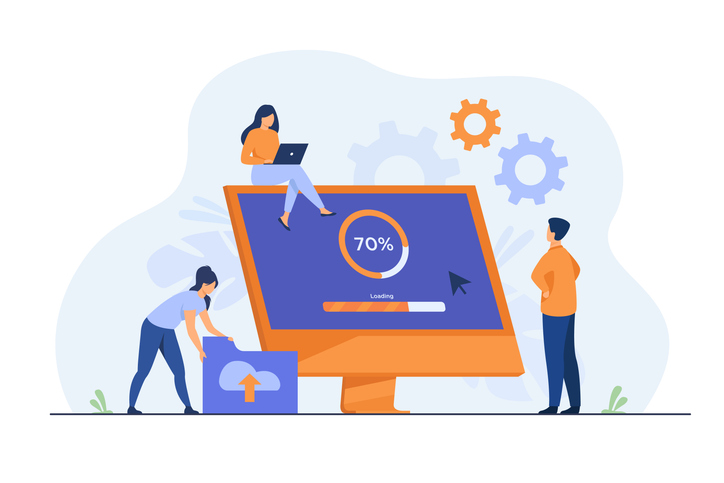Over the past decade, companies across the globe have shifted their focus towards harnessing the power of big data analytics in an effort to gain powerful insights which will give them an edge in their businesses.
When properly collected, analysed, and presented in a digestible format, data can help companies to assess their current operations and plan for the future, using the amassed information for making predictions.
In their quest to collect as much data as possible, organisations are waking up to the fact that data — without the ability to analyse it and draw actionable conclusions — is mostly just taking up valuable storage space, and at worst, a liability in the event of a breach.
Unfortunately, many organisations lack the necessary capacity to carry out the high-level data analytics which are required to meet their business goals. Recognising the need to rapidly ramp up their data analytics capabilities, company leaders are seeking out new tools which will help their teams to work with a wide range of data sources and effectively communicate their analysis to other parts of the organisation.
‘Will they be able to attract the talent needed to glean data-driven insights?’
But looking at the medium-term future, will they be able to attract the talent needed to glean data-driven insights?
In hopes of understanding the value that business leaders are looking to unearth by embracing advanced data analytics tools, it is important to understand what exactly data analytics is, how organisations are using it to produce optimised outcomes, and what the workforce of the future needs to do in order to keep up with demand for data-centric management practices.
Data analytics gold rush
At its core, data analytics is the process of taking collected data and using it to draw valuable conclusions and insights. In a data-driven environment, as many organisations aim to be, this process is essential for supporting better understanding of existing activities and decision making.
Delving a bit deeper, data analytics can be used for describing past events and then later drawing on that data for predictive purposes. So, if we want to examine whether an advertising campaign was successful, for example, then we can look at our expenditures across various paid media channels and then compare that investment with the results according to a success metric such as leads collected.
More commonly, this process is referred to as measuring ROI.
But what if we want to look at the potential success rate of launching a new campaign using some of those previously used channels? Then we can use tools like Sisense for Cloud Data Teams to pull data from expenditures on events, social and keyword campaigns, as well as data on how many leads and opportunities were generated from those efforts.
Sisense’s platform allows us to then perform a straightforward ad hoc analysis on whether those efforts were well spent.
Because this work is being done on our organisation’s cloud, we can have multiple teams and sources working with the data together. When we are ready, we are able to share a dashboard that displays the results of the analysis, complete with easy-to-digest visualisations and interactive charts, with all relevant stakeholders in the organisation.
Securing buy-in from the team
If the model is good, then it increases our probability of correctly guessing how the next campaign will go, and hopefully secure the buy-in from other team members to go ahead with it.
If working with data analysis and visualization is new for you, we suggest trying out the open-source Pandas. This Python tool is a great opportunity for trying out data wrangling and manipulation.
Zooming out from the example of improving the odds of running a successful advertising campaign, why are organisations of all shapes and sizes so excited about the possibilities stemming from predictive analytics?
Implementing predictive business analytics
Considered by many to be the Holy Grail, predictive analytics is a powerful tool for organisations hoping to better prepare for the future.
Use cases for predictive analytics are diverse, ranging from inventory planning to setting prices. Companies draw from a wide range of merged data sets and seek out conclusions that will help them to achieve goals like saving or making more money, rendering processes more efficient, optimising their human resources and boosting the effectiveness of activities. Considering the high potential for these valuable future-focused insights, the market for predictive analytics is forecast to grow to a whopping $10.95bn in 2022.
However, this field is still a vastly underdeveloped one in many industries, prompting the push to course correct by many business leaders across a range of sectors. A 2019 survey of executives in the healthcare industry found that 60 per cent of respondents intended to invest at least 15 per cent of their 2019 budget in improving their capabilities in this area moving forward.
Making the move is not without its challenges, as 13 per cent of the executives reported that a lack of skilled employees marked their biggest hurdle to implementing predictive analytics.
In response to the skills gap, industry leaders are looking to adopt data analytics technologies which will help them manage their data, especially in new environments like the cloud, which has fast become the default for modern organisations.
Along with Sisense for Cloud Data Teams, we are seeing a growth of other tools aimed at helping organisations work smarter with their data analysis efforts. One such tool is Zaloni, which helps to automate data collection tasks and govern data access with their unifying platform.
As more organizations continue to make the transition to the cloud, we can expect more investment in cloud-focused data analytics solutions over the near term.
Big data analytics market growth
Research firm IDC issued a report last April predicting that the big data and analytics (BDA) market would be worth $189.1bn in 2019, with further growth expected in the coming years that would amount to $274.3bn by 2022.
One of the prime areas that the IDC experts point to as ripe for investment and expansion is developing solutions for analysing data from the cloud.
“Cloud’s promise of agility, scale, and flexibility combined with the incredible insights powered by BDA delivers a one-two punch of business benefits, which are helping to accelerate BDA adoption,” said Jessica Goepfert, a VP at IDC.
While the report notes that banking, discrete manufacturing, professional services, process manufacturing and federal/central government comprised more than half of the value for the BDA revenues in 2019, the commercial attraction of data analytics can only grow over the next few years.
Hopefully by then organisations will have crossed the skill and technology gaps, allowing them to reap the benefits of advanced data analytics.






